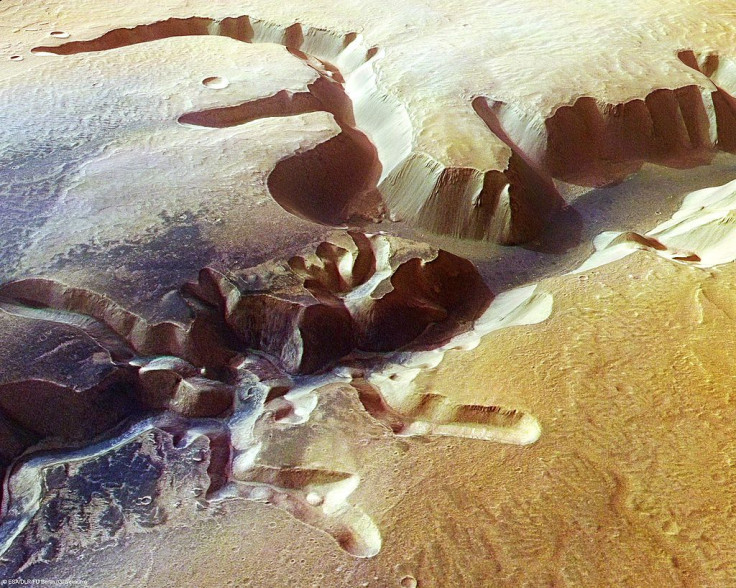Mars Mystery: Alien Life Finally Discovered In 'Pasta-Like' Rocks?

One of the main aspects of exploring Planet Mars is not only to find a plausible place where humans can survive but also to finally prove that there could be life existing outside of Earth.
International space agencies such as NASA and the European Space Agency, among others, have tried in vain to prove that there are organic lifeforms existing on the Red Planet today. We’ve focused on searching for water on Mars instead, which could eventually help in future human explorations and even give a clue on where to start looking for life on the planet. Water, after all, is one of the main elements that can support life.
Now a new study released in the journal Astrobiology suggests a very possible place where life could or still exist on Planet Mars. The NASA-funded study conducted by scientists at the University of Illinois pointed out a possible area on where to look for life on Mars, and that’s on rocks which look like “pasta.”
According to Science Daily, this unusual formation is said to be caused by organisms or bacteria called Sulfurihydrogenibium yellowstonense or “sulfuri.” According to geology professor Bruce Fouke, the bacterium comes from a line that basically evolved when Earth “oxygenated” roughly 2 billion years ago. Fouke’s team was able to study the bacteria from samples taken from Mammoth Hot Springs in Yellowstone National Park.
The scientists believe that this bacteria could also exist on the Red Planet. This bacterium is said to have evolved to adapt to harsh environments and that it could also survive in Mars which is characterized by a weak atmosphere, high UV levels, extremely low oxygen levels and high sulfur and carbon dioxide.
"Taken together, these traits make it a prime candidate for colonizing Mars and other planets," Fouke said.
Now the sulfuri is associated with the unique rock structures of Mars based on the bacterium’s “unusual lifestyle.” According to Fouke, in fast-flowing water, the bacteria tend to latch to one another, so they won’t get washed away.
"They form tightly wound cables that wave like a flag that is fixed on one end," he said. These cables are formed so other microbes won’t attach to them which could potentially result in them being washed away. The cables are formed via a slippery substance or mucus-like liquid.
"These Sulfuri cables look amazingly like fettuccine pasta, while further downstream they look more like capellini pasta," Fouke said.
Using data gathered from their research, scientists believe that these are the same cables or rock structures that are evident in some areas of Mars. This makes the Martian rocks the best place to start searching for water and, most probably, the first signs of alien life forms on the Red Planet.
© Copyright IBTimes 2025. All rights reserved.




















